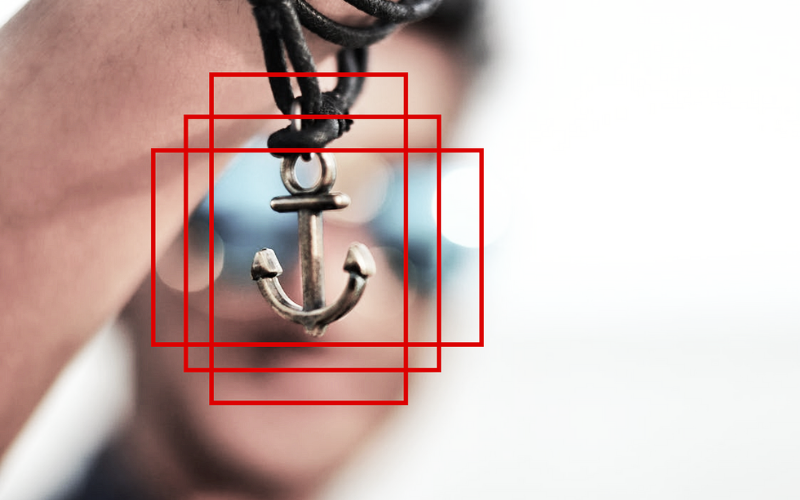In the ocean’s mysterious depths lies a mystery waiting to be unraveled: How does an anchor work in deep water? Explore the depths of maritime physics as we figure out how anchors work below the water’s surface. Find the tricks that keep boats steady in the ocean’s vast depths.
You must drop the line correctly in deep water to get a good set. If the water is shallow, you can let your anchor rode drift back and then turn it around to set it. The chain isn’t too long, so it won’t pile up on the bottom.
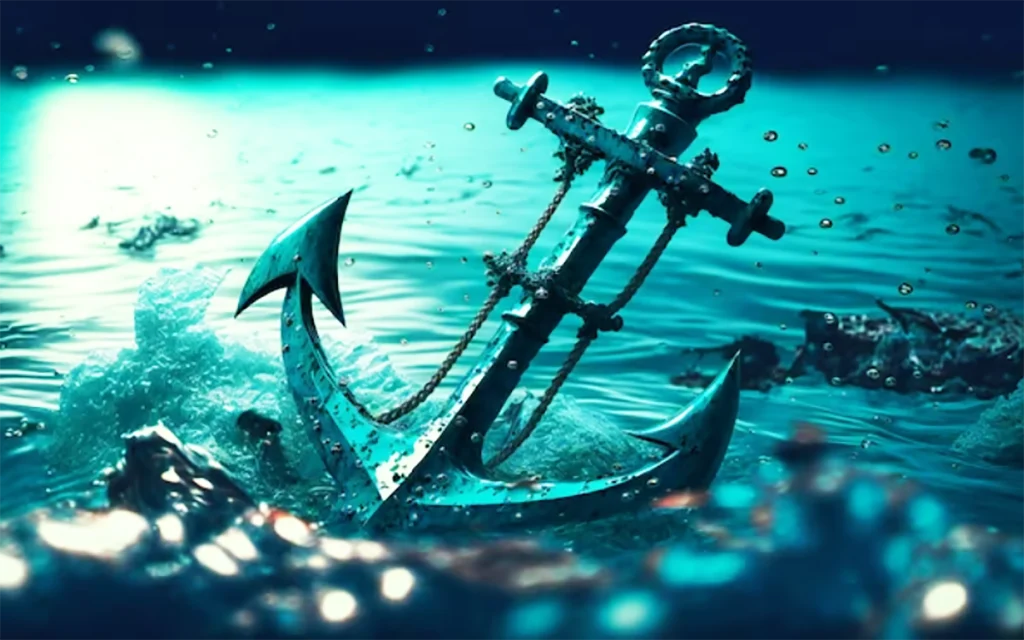
But if the water is deeper, you should only let out about three times the depth of the water or less. Then, you should drift back on the road to feel the anchor catch. For more information visit the website The diet and weight loos.
Cracking the Code: How Does an Anchor Work in Deep Water?
These days, anchors have a chain close to the anchor and a lighter wire or rope that goes up to the boat. The anchor chain adds weight to the anchor so it can be set with enough horizontal force to stay in place.
The captain should “set” the anchor by flipping the power around to ensure it stays put. Setting it up right keeps the boat on course and stops it from drifting off. The length of the rope and chain should be seven times the depth.
If you are anchoring in water more than thirty feet deep, there are ways to get a better set. Packing up the chain on the bottom in deep water is risky before setting the anchor because the hook might not be set right.
“Drop it and Set it” and the subsections “The Drop” and “The Set.” That will help you avoid this. It shows you step-by-step how to set your base correctly.
Anchor Types for Deep Water:
Claw anchors, plow anchors, fluke anchors, Bruce anchors, and super anchors are just a few of the anchors that can be used in deep water.
The type of ground and the size of the boat affect the choice of anchor.
Figuring Out How Anchors Work in Maritime Navigation
Before going to sea, you should learn a lot about it. An anchor is one of the most important things to stabilize your ship. Anchors are a mysterious piece of gear that will be explored in this article.
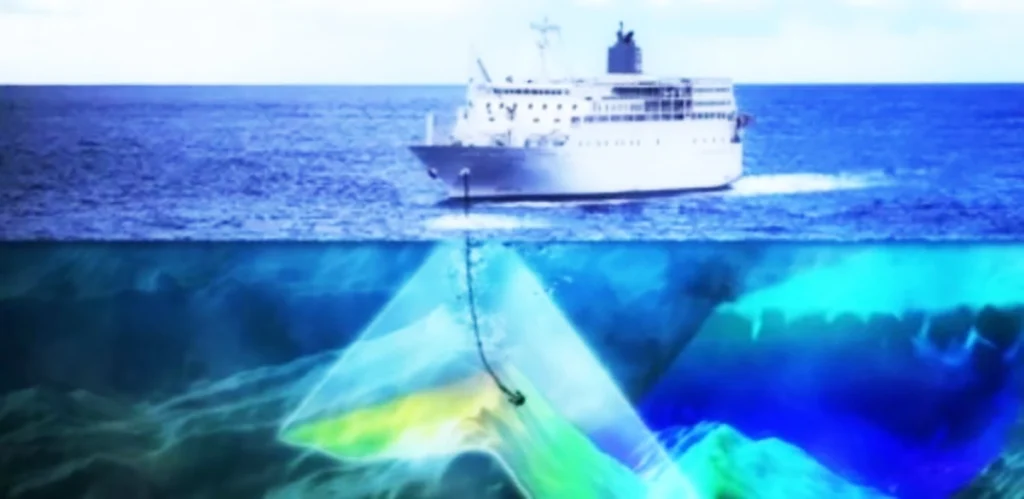
We will find out how they work and what they are made of. The condition of “How does an anchor work in deep water?” entails the flukes or blades digging into the ocean floor, providing resistance against the current and preventing drifting.
What does an anchor do?
What’s an anchor? An anchor holds a boat in place. Anytime wind or currents try to take a ship off course, anchors keep it in place. Seafarers and boaters use a makeshift anchor when they are in shallow water. An oil rig uses a set anchor. Adherents are also known as drogues. For ships that can’t reach the water’s bottom, a drogue can help hold them there.
There is a backup in case the first one fails and another choice for different bottom conditions, even if the first one is usually used. Larger ships have more than one anchor to keep them in place at docks and ports. They can anchor in the ocean if the water is not too deep.
Purpose of an Anchor:
- Anchors are big, heavy metal objects that stick out into the water and hold a boat in place.
- For safety reasons, the anchor’s main job in deep water is to reach the bottom and hold the boat steadily in place.
What kind of material do anchors look like?
Marine Insight says anchors are usually made of properly protected metals that don’t rust, like those that are electroplated and galvanized.
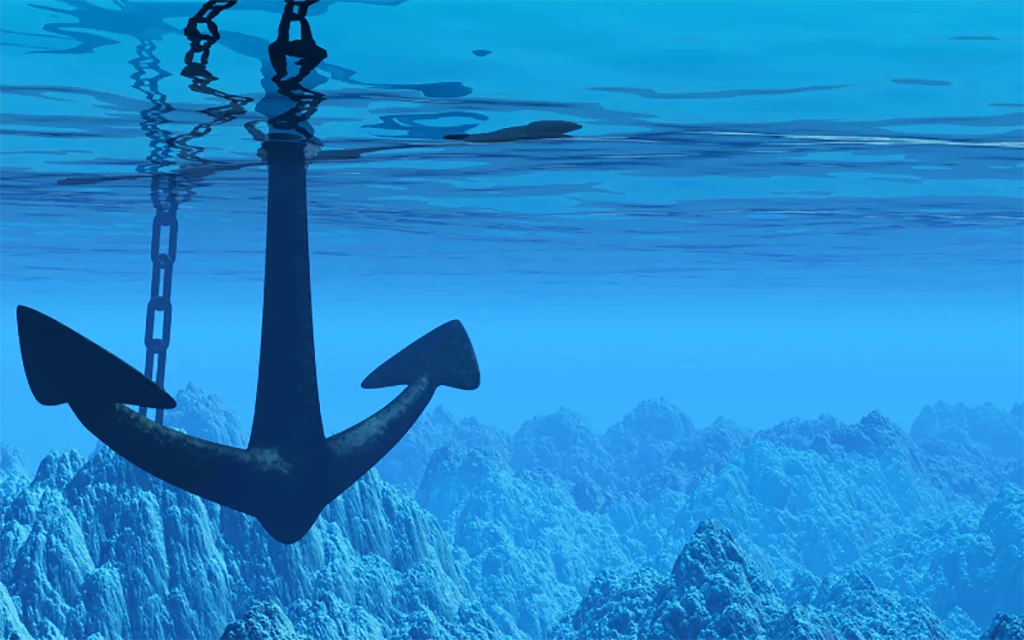
When these materials are used, their high strength-to-weight ratio is a plus. Even structures made of light-reinforced materials can handle much more stress or strain than structures made of metals alone. It’s also important to consider cost when using cheaper but bigger anchors to keep a boat in place.
Different kinds of anchors: time and situations
Anchors come in a lot of different styles. They’ve changed a lot over time, but what matters most is how they do in different bottom types. Finding out what those conditions are is the most important part of making sure an anchor works right.
The ability of an anchor to build resistance depends on its ability to engage and enter the seabed, according to West Marine. We have taken part in some anchor tests, and while the results have been mixed, one thing can’t be argued: choosing the right bottom for anchoring is much more important than the anchor itself.
Sand is one of the best things to use to support a boat. Anchors work best in hard sand because they stick there. Sand works better than mud, and mud needs a wider fluke angle and more surface area to stick to. Since there is usually something else below the mud, the best way to anchor is to go through it.
Fortress anchors are a good choice for this. To build up success, “How does an anchor work in deep water” often features sharp and pointed tips that aid in sharpening various types of seabeds, such as mud, sand, or gravel.
You need more than the wind to sail the oceans. You must also understand anchors and their applications. This lighthouse explains anchors’ intricate workings and makes maritime fans appreciate them more.
How to Rest Your Boat Safely
Would you like your anchor to stay where it is? You can find out how deep the water is and what the bottom is like when you are in it. It could have sand, rocks, weeds, or wet dirt. Next, pick an anchor that will work with the ground.
The anchor rod should be four to seven times the depth of the water for it to hold well. That can be more like four with all chain rods. But rodes with rope and chains need about seven times as much depth.

You can use a smaller scope ratio if the conditions aren’t great. For example, we spent the night in Bora Bora with a 3:1 scope when he had to anchor in water 90 feet deep or more. You might have to use less in an emergency, like when you need to keep the boat from going ashore because the engine broke down or you lost control of the boat for some other reason.
But with all chains, the deepest you can hold is about a third of the way along your ride. The rope chain is 1/4 the length, or 4:1. The weather will be mild, with light winds and no bad weather.
We could only go 100′ deep when we had a 300′ chain in Bora Bora. We’d rather anchor in a lot less, though, and anything over 70′ makes us stop and not sleep well.
What is a Sea Anchor?
The name “sea anchor” is a bit of a bad joke since it’s not an anchor. It’s something that slows down a boat. Most sea anchors look like underwater parachutes, but some are drogues in different shapes, such as towable cones or cups.
It’s hard to pull these things through the water. Throwing one off the boat slows it down because it makes the water go against it more, unlike putting an anchor on the bottom, which will stop a boat in its tracks. Proper maintenance is key to “How does an anchor work in deep water,” involving regular checks for wear and tear to ensure optimal performance over time.
Are there other ways to stop/slow the boat?
Heaving means setting up your rudder and sails to work against each other to slow the boat down so that it is comfortable and drifts downwind instead of sailing fast. All sailors should learn this useful skill because it can give you a break to rest and fix things in bad weather.
The boat doesn’t stay still, but it won’t heel and slam like it does when going upwind. You can check on things from the deck, rest, and shower below to recover from a blow.
If you’re ready to stop sailing but can’t find a place to land, taking the boat slowly to a crawl is a great way to catch your breath.
Forces at Play in Deep Water Anchoring
Knowing how to anchor deep water is essential, but outside forces like water currents, tides, and wind can make it hard. People on boats learn how to check anchor tension properly and how to spot changes in the outside world.
Best Practices for Anchoring in Deep Water
You need to think about a few things when you anchor in deep water.
With all the new technology that can keep a boat in place, like boat control systems and trolling motors with spot-lock or virtual-anchoring features, anchoring may seem like an old skill that is going away.
But setting an anchor is still the safest way to park a boat so you can bottom fish or hunt animals that like to hang out near wrecks and other structures underwater, especially in water deeper than 100 feet or with a strong current or wind.
In understanding the flow of “How does an anchor work in deep water”, it’s important to note that anchors often feature sharp and pointed tips to penetrate various seabeds like mud, sand, or gravel.
Knowing how to anchor correctly for safety and control becomes more important as boaters go deeper into the ocean.
A Full Guide to Anchoring Techniques for Deep Water
Anchoring a boat in deep water can be tricky, but you must know how to do it for many fishing conditions. Boat control methods have gotten better over the years, but anchors are still a good way to keep the boat under your control.
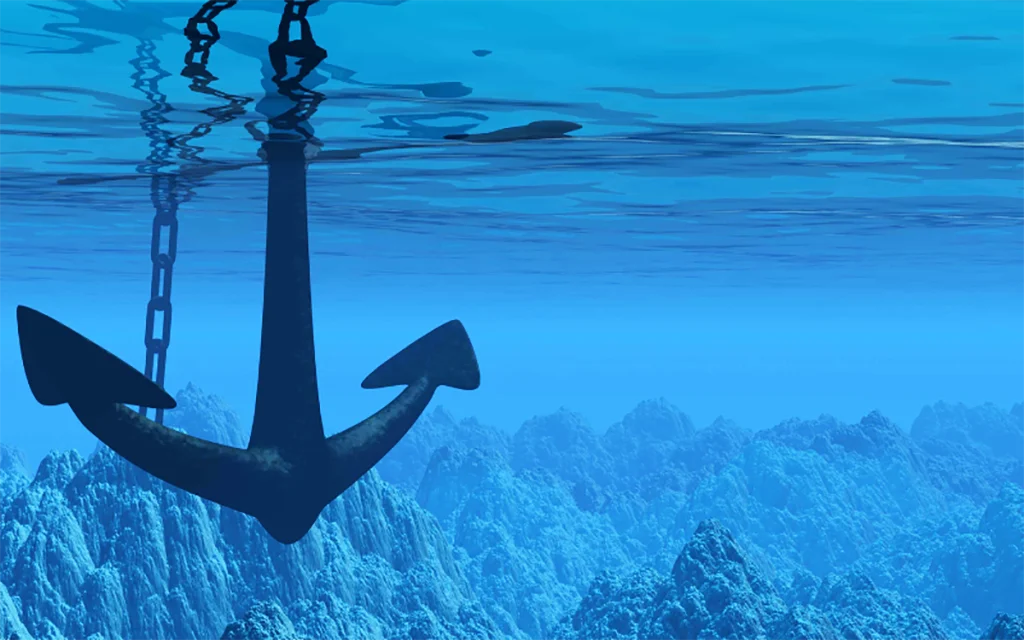
That is especially true when the water is more than 100 feet deep. This guide discusses things to think about, different kinds of anchors, and expert advice from the East and West Coasts.
Gear Considerations for Deep Water Anchoring
When you anchor deep, you need to think about specific pieces of gear. Modern technology, like boat control systems and trolling motors with spot-lock features, is discussed. Even with these improvements, anchoring in deep water is still very important, especially when fishing for game near underwater buildings or on the bottom.
They keep ships anchored in the huge ocean. Accepting “How does an anchor work in deep water?” is key, especially when arranged in areas where different seabed forms may require specific anchor designs or systems.
Choosing the Right Anchor
Two experienced captains’ points of view, those of Capt. Mark Wisch and Capt. Dave Marciano shed light on anchor decisions. It discusses the argument between Bruce-style or Lewmar claw anchors and Danforth anchors.
Things like how easy they are to set up, how much they can hold, and how well they work in different situations are discussed. It is emphasized how important it is to use the right amount of chain for a secure hold.
Rigging and Anchor Lines
When grounding in deep water, this chapter details the rigging and anchor lines that must be considered. Along with explaining why Captain Wisch likes high-tensile nylon anchor lines, the value of correct scope ratios is also discussed. This section gives tips on how to judge scope quickly and practice anchoring techniques with buoys.
Wind and tide direction are factors that need to be considered when deploying. “How does an anchor work in deep water?” They can affect the vessel’s position and the anchor’s holding power.
Captain Marciano’s Approach
Wicked Tuna star Capt. Dave Marciano talks about how he anchors 34- and 43-foot boats. He goes into depth about the Lonestar marine anchoring systems, Danforth-style anchors, and chain and rode configurations he chooses. It stresses the importance of using too big supports to stop drag.
Anchor Retrieval Techniques
Anchors get stuck sometimes, and this chapter discusses how to get them out. According to Captains Marciano and Wisch, driving the boat ahead of the anchor to free it is better than using trip lines. The topic also includes a ball-style recovery system, like the Anchor Master by T-H Marine, which can be used by anglers who don’t have winches or windlasses.
Ultimately, the guide stresses how important it is to know how to anchor in deep water. It shows how practical it is to set up and retrieve an anchor, ensuring a solid hold in various fishing situations. It is emphasized again how important it is to buy the right gear and stay up to date on changes in anchoring technology to have a good and enjoyable boating trip.
Finally,
The working “How does an anchor work in deep water” wheel around its mechanism, wherein the flukes or blades dig into the ocean floor. When the bottom is rocky, you need an anchor that is both strong and able to hook onto something on the bottom.
That is a lucky spot because the anchor needs to grab something instead of digging in. Getting a good hold of shale, clay, or grass bottoms is hard.
Some studies show that construction and oil ships stay in place with the help of dynamic positioning. That being said, bigger, more expensive ships that work in deep water can’t afford to go off course and do this all the time. For those ships, the more complex system of thrusters and blades run by a computer can work.

